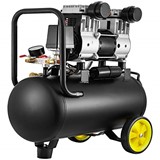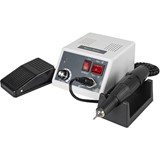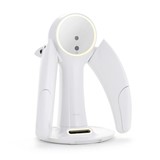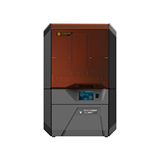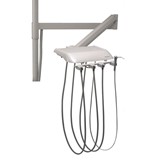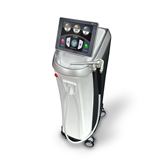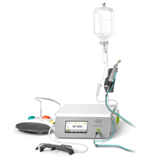When it comes to setting up a dental practice, choosing the right dental chair is one of the most crucial decisions you'll make. A dental chair is not just a piece of furniture; it's a vital tool that directly impacts the comfort of your patients and the efficiency of your dental procedures. With numerous options available in the market, finding the perfect dental chair may seem overwhelming. However, by considering some key factors, you can make an informed decision that will benefit both your patients and your dental practice.
Understanding the Importance of Dental Chairs in Modern Dentistry
In the realm of modern dentistry, dental chairs stand as one of the most crucial and indispensable tools for any dental practice. Gone are the days when dental chairs were merely pieces of furniture; they have evolved into sophisticated equipment that plays a pivotal role in enhancing patient comfort, optimizing dental procedures, and ultimately shaping the overall success of a dental practice.
-
The Evolution of Dental Chairs
Dental chairs have come a long way since their humble beginnings. In the past, a simple reclining chair would suffice for dental treatments, but as dentistry progressed and patient expectations evolved, so did the dental chair. Today, dental chairs are designed with a focus on ergonomics, patient comfort, and seamless integration with cutting-edge dental technologies.
-
Patient Comfort Takes Center Stage
One of the primary considerations when choosing a dental chair is patient comfort. A relaxed and comfortable patient is more likely to cooperate during dental procedures, which, in turn, can positively influence treatment outcomes. Modern dental chairs are equipped with advanced cushioning materials, adjustable headrests, and ergonomic designs that cater to the needs of patients of all ages and sizes. The ability to adjust the chair's position smoothly and quietly also helps to alleviate patient anxiety and foster a calming environment within the dental operatory.
-
Boosting Efficiency and Ergonomics for Dentists
While patient comfort is paramount, the well-being and efficiency of dental practitioners should not be overlooked. Prolonged and repetitive procedures can take a toll on a dentist's physical health, leading to work-related musculoskeletal issues. To address this, modern dental chairs are designed with ergonomic features that support the natural posture of dentists. Easy-to-use control panels, flexible movement options, and adequate lumbar support contribute to a comfortable working experience for the dental team, ultimately leading to improved efficiency and reduced fatigue.
-
Hygiene and Infection Control
Maintaining a high level of hygiene and infection control is of utmost importance in any dental practice. Dental chairs with seamless upholstery and smooth, easy-to-clean surfaces reduce the risk of cross-contamination between patients. Additionally, some chairs come with removable and autoclavable components, ensuring thorough sterilization between appointments. Investing in dental chairs with optimal hygiene features not only protects patients but also complies with industry standards and regulations.
-
Integration with Advanced Dental Technology
In the digital age, dental technology plays a pivotal role in improving diagnostic accuracy and treatment outcomes. Modern dental chairs are designed to seamlessly integrate with various dental equipment such as delivery units, dental lights, and dental imaging systems. This integration streamlines the workflow within the operatory, allowing dentists to access necessary tools conveniently and efficiently.
-
Safety First
Safety should always be a top priority in dentistry. Dental chairs are equipped with safety features to protect both patients and dental professionals. Emergency stop buttons, foot controls, and stability mechanisms are some of the safety features that ensure a secure dental environment. Dental practitioners can focus on delivering exceptional care, knowing that their patients are in safe hands.
-
Future-Proofing and Upgradability
The world of dental technology is ever-evolving, with constant advancements and innovations. Investing in dental chairs that offer upgradability ensures that your dental practice stays current with the latest trends and technologies. Future-proofing your practice by selecting chairs that can adapt to new features and functionalities is a wise decision that can save costs in the long run.
-
Reputation and Reliability
When selecting dental chairs, considering the reputation and reliability of the manufacturer is crucial. Established and reputable brands are more likely to produce high-quality and dependable dental chairs, backed by excellent customer support. Checking reviews and seeking recommendations from fellow dental professionals can provide valuable insights into the performance and durability of different chair models.
-
Balancing Price and Value
While it can be tempting to opt for the most feature-rich and advanced dental chair, it's essential to strike a balance between price and value. Determine the features that are essential for your specific dental practice and prioritize them while considering the budget. Investing in a durable and efficient dental chair that meets your needs can lead to significant long-term benefits.
-
The Vital Role of Dental Chairs
In conclusion, dental chairs have evolved from simple reclining chairs to sophisticated tools that play a vital role in modern dentistry. Prioritizing patient comfort, dental team ergonomics, hygiene, safety, technology integration, and upgradability ensures that dental practices can deliver exceptional patient care and stay at the forefront of the dental industry. By understanding the importance of dental chairs and making informed choices, dental professionals can create a positive and efficient environment for both patients and practitioners alike.
Ergonomic Design and Patient Comfort Features
When it comes to providing exceptional dental care, the significance of ergonomic design and patient comfort in dental chairs cannot be overstated. These features go hand in hand to create a conducive and pleasant environment for both the dental practitioner and the patient. Let's delve into why ergonomic design and patient comfort are crucial aspects to consider when selecting dental chairs for a modern dental practice.
Enhancing the Dental Experience through Ergonomics
1. Promoting Dentist Well-being
Dentistry demands long hours of focused work, often involving repetitive motions and fixed postures. An ergonomically designed dental chair takes the strain off the dentist's body, supporting a natural and comfortable working posture. Adjustable armrests, backrests, and headrests allow dentists to position themselves optimally during procedures, reducing the risk of musculoskeletal disorders and ensuring their well-being throughout their careers.
2. Increasing Work Efficiency
Ergonomic dental chairs contribute to increased work efficiency and productivity. With customizable settings, dentists can easily access and adjust the chair's position to suit different treatment needs. This seamless adaptability streamlines the workflow and minimizes disruptions during dental procedures, allowing dentists to focus entirely on delivering high-quality care to their patients.
3. Reducing Patient Anxiety
Anxiety is a common sentiment among dental patients, and an ergonomic dental chair can play a significant role in easing their fears. The smooth and quiet movements of the chair, along with its gentle reclining capabilities, create a more relaxing atmosphere. Comfortable patients are more likely to feel at ease during treatments, fostering a positive dental experience and encouraging patient loyalty.
4. Accommodating Diverse Patients
Dental practices serve patients with varying ages, sizes, and physical abilities. An ergonomic dental chair caters to this diversity by offering adjustable features to accommodate patients of all shapes and sizes comfortably. Whether it's a child visiting for a routine check-up or an elderly patient in need of complex dental work, the dental chair's versatility ensures that every patient feels well-supported and at ease.
Prioritizing Patient Comfort Features
1. Plush Cushioning and Upholstery
The foundation of patient comfort in dental chairs lies in the quality of cushioning and upholstery. Premium cushioning materials contour to the patient's body, reducing pressure points and promoting a cozy experience. Smooth and durable upholstery not only adds to the overall aesthetics of the dental chair but also contributes to easy maintenance and hygiene.
2. Adjustable Headrests and Armrests
Patient comfort is further enhanced by dental chairs that feature adjustable headrests and armrests. These features allow patients to rest their heads and arms in a relaxed position during treatments, preventing unnecessary strain and discomfort. The ability to customize these aspects also adds a personal touch to the patient's experience, showing that their comfort is a top priority.
3. Seamless Reclining and Positioning
Modern dental chairs offer seamless reclining and positioning capabilities, allowing patients to find a comfortable position effortlessly. This feature is particularly valuable for longer and more complex procedures, as it enables patients to relax during treatment and minimizes any discomfort they may feel from sitting in the same position for an extended period.
4. Integrated Massage and Heating Options
Some dental chairs take patient comfort to the next level by incorporating massage and heating functionalities. These features provide a soothing and spa-like experience, helping patients feel more at ease and relaxed throughout their dental appointments.
Examining Chair Mobility and Positioning Flexibility
In the realm of modern dentistry, the importance of chair mobility and positioning flexibility in dental chairs cannot be underestimated. These features play a pivotal role in enhancing the efficiency of dental procedures, improving patient comfort, and optimizing the workflow within the dental operatory. Let's delve into why chair mobility and positioning flexibility are essential aspects to consider when choosing dental chairs for a contemporary dental practice.
The Power of Chair Mobility
1. Accessible Patient Seating
Chair mobility allows dental practitioners to effortlessly move the dental chair to accommodate patients comfortably. Whether it's positioning the chair closer to the waiting area for elderly patients or creating space for wheelchair-bound patients, the ability to maneuver the chair with ease ensures that every patient feels welcome and well-cared for.
2. Seamless Transitions between Treatments
In a busy dental practice, seamless transitions between patients and procedures are vital. A mobile dental chair enables dentists and dental assistants to efficiently move patients in and out of the operatory, optimizing the workflow and reducing waiting times. This enhances overall practice productivity and patient satisfaction.
3. Collaborative Treatment Approach
Chair mobility promotes a collaborative treatment approach within the dental team. By easily adjusting the chair's position, dental professionals can work cohesively during complex procedures, ensuring everyone has optimal access to the treatment area. This seamless collaboration enhances communication and the delivery of comprehensive patient care.
4. Efficient Operatory Layout
Dental operatory layouts should be designed for maximum efficiency and comfort. Mobile dental chairs offer the advantage of flexibility in arranging the operatory space. Dentists can easily position the chair to access essential instruments and equipment, reducing the need for excessive movements during treatments.
The Flexibility of Positioning
1. Precise Patient Placement
Positioning flexibility allows dentists to precisely place patients in the ideal treatment position. Whether it's reclining the chair slightly for a routine examination or adjusting it upright for a more complex procedure, the ability to position the chair with precision ensures optimal access and visibility for the dental team.
2. Patient Comfort Customization
Every patient is unique, and their comfort during dental treatments should be tailored to their specific needs. Positioning flexibility enables dentists to customize the chair's angle and height, ensuring that patients are at ease throughout the procedure. Comfortable patients are more likely to have a positive dental experience and feel confident about returning for future treatments.
3. Supporting Different Dental Procedures
Dental practices offer a wide range of procedures, each requiring specific patient positioning. From general check-ups to oral surgeries, dental chairs with positioning flexibility can adapt to the requirements of diverse treatments. This adaptability streamlines the process of switching between procedures, enhancing overall practice efficiency.
4. Improving Ergonomics for Dental Professionals
Positioning flexibility not only benefits patients but also enhances the ergonomics for dental professionals. Dentists can adjust the chair to maintain a comfortable and natural posture during treatments, reducing the risk of strain and fatigue that can result from prolonged procedures.
Hydraulic vs. Electric Dental Chairs: Pros and Cons
Hydraulic Dental Chairs
Pros:
- Cost-Effectiveness: Hydraulic dental chairs are generally more budget-friendly compared to electric chairs, making them a suitable option for dental practices with budget constraints.
- Simplicity and Reliability: Hydraulic chairs have fewer complex components, making them straightforward to operate and less prone to technical malfunctions.
- Smooth and Quiet Movement: Hydraulic chairs offer smooth and quiet movements during adjustments, contributing to a calming environment for patients.
- Durability: These chairs are known for their sturdiness and longevity, providing reliable service over an extended period.
Cons:
- Limited Positioning Options: Hydraulic chairs may have limited positioning options compared to their electric counterparts, potentially restricting the range of treatment positions for some procedures.
- No Preset Positions: Hydraulic chairs do not typically offer preset positions for easy switching between treatments, requiring manual adjustments for each patient.
- Foot-Pedal Operation: Some hydraulic chairs are operated using foot pedals, which can be less convenient for dental practitioners compared to electric chairs with user-friendly controls.
Electric Dental Chairs
Pros:
- Extensive Positioning Flexibility: Electric dental chairs offer a wide range of positioning options, allowing dentists to precisely adjust the chair to suit various treatments.
- Preset Positions: These chairs often come with preset positions, enabling quick and seamless transitions between different treatment settings.
- Ergonomic Controls: Electric chairs are equipped with user-friendly control panels, allowing dental practitioners to make precise adjustments easily.
- Integration with Technology: Electric chairs can often be integrated with other dental equipment, such as dental lights and imaging systems, enhancing the overall operatory workflow.
Cons:
- Higher Initial Investment: Electric dental chairs typically come with a higher upfront cost than hydraulic chairs, which may be a deterrent for some dental practices with limited budgets.
- Reliance on Electricity: As the name suggests, electric chairs require a stable power supply for operation, which may pose challenges in areas with inconsistent electricity availability.
- Complexity and Maintenance: Electric chairs have more intricate mechanisms than hydraulic chairs, which may require more regular maintenance and potential technical troubleshooting.
- Noise Level: In some cases, electric chairs may produce more noise during movement compared to hydraulic chairs.
Budgeting for Your Dental Chair Investment
Investing in dental chairs is a critical decision for any dental practice, as these chairs directly impact patient comfort, treatment efficiency, and the overall success of the practice. However, budgeting for this investment requires careful consideration and planning to ensure that you make a wise and cost-effective choice.
When establishing a dental practice, selecting the right dental chair becomes a critical decision that significantly impacts patient care and the overall success of the practice. Dental chairs have evolved from simple pieces of furniture to sophisticated tools designed with a focus on patient comfort, dentist ergonomics, and seamless integration with advanced dental technologies. By prioritizing patient comfort features, such as plush cushioning, adjustable headrests, and smooth reclining capabilities, dental practitioners can create a welcoming and relaxing environment that eases patient anxiety and fosters loyalty. Additionally, considering ergonomic design and chair mobility ensures not only the well-being of dental professionals but also enhances the efficiency of treatments and promotes collaborative teamwork. Making an informed choice between hydraulic and electric dental chairs, based on factors like cost, positioning flexibility, and technology integration, allows dental practices to strike the right balance between their specific needs and budget constraints. Ultimately, a well-chosen dental chair can elevate the dental experience, improve treatment outcomes, and establish a positive reputation for the practice within the community.







-160x160-state_article-rel-cat.png)
